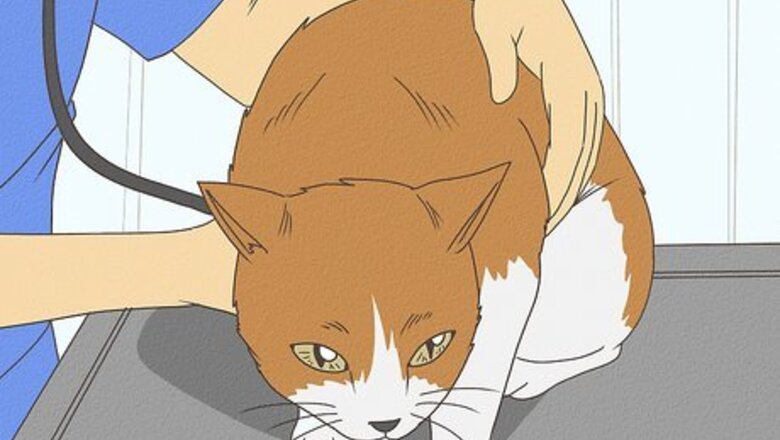
views
X
Expert Source
Natalie Punt, DVMVeterinarian
Expert Interview. 14 September 2021.
Most cats with FELV lead full, normal lives, but these cats do have special environmental and health requirements and are susceptible to some health consequences once infected.[2]
X
Research source
AAFP - Feline Retrovirus Management Guidelines
Confirming FeLV
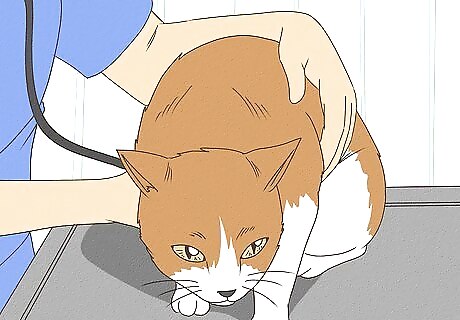
Make sure that your cat actually has FeLV. Take your cat to a veterinary clinic so that your cat's blood can be drawn and tested. The test for FeLV is very sensitive and accurate; however, it is often necessary to retest the cat after four weeks to see if they are still positive, or have fought off the infection and are now immune. They will often also test for Feline Immunodeficiency Virus (FIV). The FELV (and FIV in cats 6 months of age or older) tests are routinely performed by animal shelters prior to adoptions, so the results of this testing should be included with the cats veterinary records when adopted. If you found your cat or kitten, or obtained them from a private party, then viral testing should be part of your immediate health care plan. This is especially important if you plan to bring them to a home where cats already live.

Look for symptoms of infection. Cats who have recently come in contact with the virus may show signs of the initial viral infection, with non-specific signs such as low energy, fever, or a decreased appetite. After the initial ‘viremia’ (virus multiplying in the bloodstream), some cats’ immune systems will actually fight off and clear the virus completely, others will progress into a persistently infected or ‘latent’ infection stage. At this stage, cats are often asymptomatic and can remain asymptomatic for many years.

Understand the complications that can arise should your cat have FeLV. While the disease can be managed, and may even go into remission, flare-ups are always possible. FeLV can lead to cancers, ongoing susceptibility to infection, immune system suppression, and severe anemia. It can also contribute to breeding abnormalities and arthritis abnormalities with red blood cells.
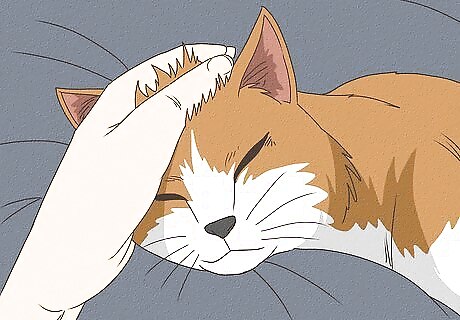
Be ready to take extra precautions and care measures if your cat has FeLV. He or she can live for several years without the disease causing major problems if given appropriate care. In some cases, the cat may even become leukemia-negative, meaning that they will live a long and happy life.
Caring for a Cat Diagnosed with FeLV
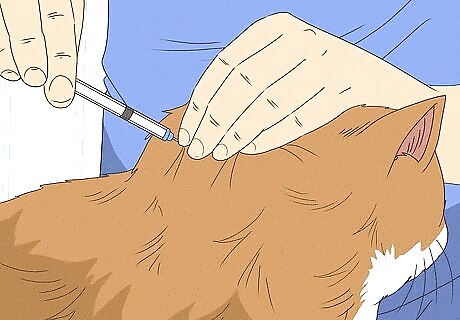
Give an unvaccinated cat a shot of the vaccination. There is no treatment or ‘cure’ for this virus. Vaccination against FELV will greatly increase your cats chances of clearing the infection if exposed instead of becoming persistently infected, which is most likely if your cat is unvaccinated. Cats can start a leukemia vaccine series as early as 8 weeks of age. Boosters are given every 1-3 years depending on the amount of exposure risk, and the type of vaccination used.
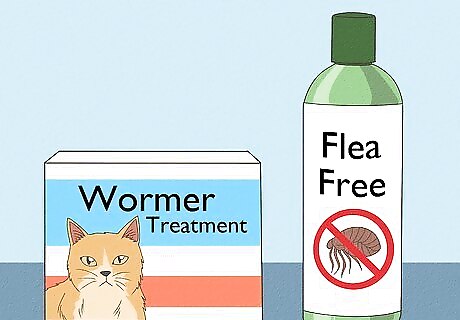
Give your cat medication for worms, ear mites, fleas, ticks, and anything else that may cause him/her discomfort. Do not treat him/her for all these things at once, or else the cat will just feel even worse. Wait a week or two before treating him/her for a second condition.

Keep your house stress-free. If your cat is frightened or agitated by anything in your house, get rid of the cause. Ask your family and friends to be quiet and to avoid being loud when inside the house. Keep your cat's environment warm enough. He/she may need more warmth than a non-infected cat. Snug blankets and sleeping areas are essential.

Feed your cat a high quality, balanced diet . Higher-quality food will improve your cat's condition and is an assurance that your cat is getting the required nutrients that cheaper food lacks. Do not feed any home or commercially prepared raw diets as cats with FELV have a compromised immune system and could become ill from harmful bacteria this way. Don’t feed solely fish, as this is lacking in many essential nutrients.
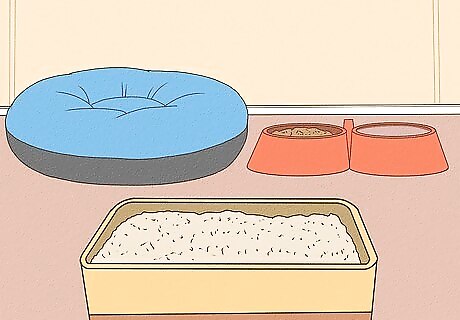
Ensure that the cat's gear is hygienic. Keep all of your cat's litter boxes, food bowls, water bowls, etc. very clean. This means daily cleaning, without fail. If you're not around to do it, someone else must be tasked with this chore.
Limiting Spread

Practice good hygiene. The FELV virus does not survive for long outside of the infected cat, but may be passed by hands, clothes or other objects. Practice good personal hygiene and wash your hands if touching different cats, especially if you pet or handle a known FELV positive cat. The FELV virus does not infect people.
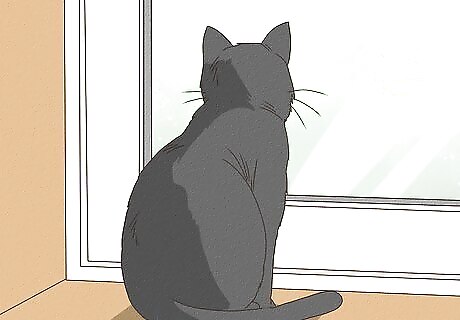
Keep your cat indoors to avoid spreading the disease or worsening its condition. FeLV is spread through blood, saliva, and excrement. Outdoor cats are at higher risk of contracting this disease, due to the increased likelihood of coming into contact with infected cats. Cats pass the virus on to one another through mutual grooming, nose-to-nose contact and bites. Sharing the same food and water bowls can also pass on the infection.

Get your cat neutered or spayed, if you haven't already done so. This will help to prevent passing on the infection to any newborn cats or cats sought through mating. Make sure that the clinic you take your cat to for this operation knows that your cat has FeLV. They'll take extra care of your cat and provide the appropriate sterilization of the operating room and instruments.
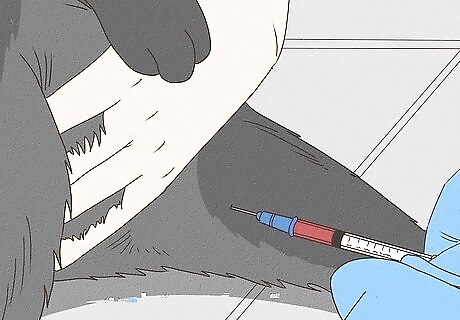
Get your other cats tested for FeLV. If they're free of the infection, have them vaccinated. Be aware that vaccination doesn't necessarily mean that they can be with your sick cat just yet; wait a while before doing that so the vaccine takes effect; ask your vet for exact details. The vaccine is effective if given prior to the cat getting the disease. All household cats should get a booster every one to three years, as advised after risk assessment by a veterinarian.

Get any kittens in the household vaccinated. If you have a kitten in the same house as your sick cat, then give the kitten the first vaccine when it is eight to nine weeks old. Give the second one three to four weeks later.
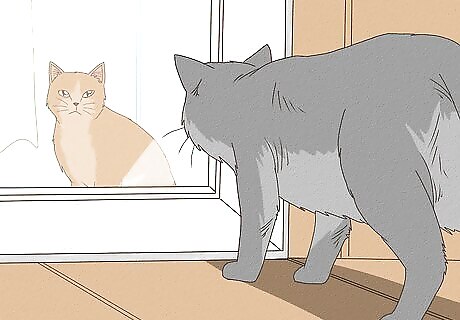
Do your very best to keep your non-infected cats away from your sick cat. They might not like being separated from their friends, but it's best for all of them until your cat is feeling better. And unfortunately, even with vaccination (it's not 100 percent effective), persistent contact with the infected cat may well lead to another uninfected cat getting the disease; it is better to avoid this possibility. Bites and scratches are common routes of transmission, but even friendly interactions, such as touching faces, sharing food or water dishes and grooming one another can result in infection. Avoid getting another cat. The less cats you have, the less chances the infection has to spread.
Ongoing Care

Bring your cat in for a checkup every 6 months. The longer a cat lives and is infected with FELV, the more likely they are to develop certain types of ocular problems, oral infections, blood diseases, and cancer. Infected cats should have a physical examination and blood counts twice yearly. A more comprehensive blood, urine, and fecal examination should be performed once yearly. Your vet will ensure that the cat receives the required regular vaccinations, including rabies if that is relevant to your location. The 6-monthly checkups are vital, even if you see no signs of sickness in your cat.
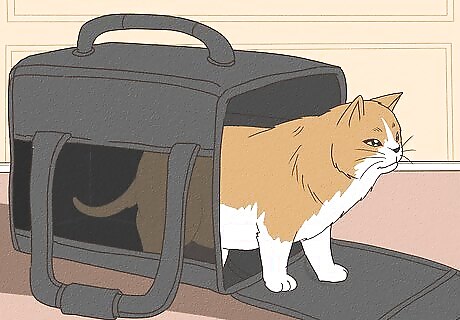
Keep vet visits calm and stress-free. If you're worried and upset, your cat will pick up on this. Keep calm, provide a comfortable and darkened carrier for your cat and travel during light traffic periods so that you're not stuck inside the car for longer than is required to get there and back. Reassure your cat while at the vet's and be in his/her sight at all times the vet allows. Set aside fears––the vet is on your side and will do the best by your cat.

Be alert to changes in your cat's well-being. Any sign of illness should garner prompt attention as the outcome is likely to be better the earlier problems are detected and addressed. Ask your vet for an up-to-date list of things to watch for in terms of disease progression. When you notice anything that might be on this list, contact your vet to discuss any needed changes in care arrangements for your cat. Be aware that you need to spot secondary infections quickly, as your cat's immunocompromised system will mean he/she will likely be more affected than a non-FeLV infected cat and the earlier treatment is given, the greater the chance your cat has of getting over it sooner.
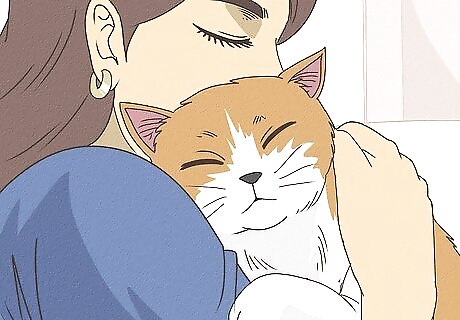
See to your cat's ultimate comfort. Play with your cat, give him/her attention (when he/she wants it), and make sure that your cat is always comfortable and happy.



















Comments
0 comment